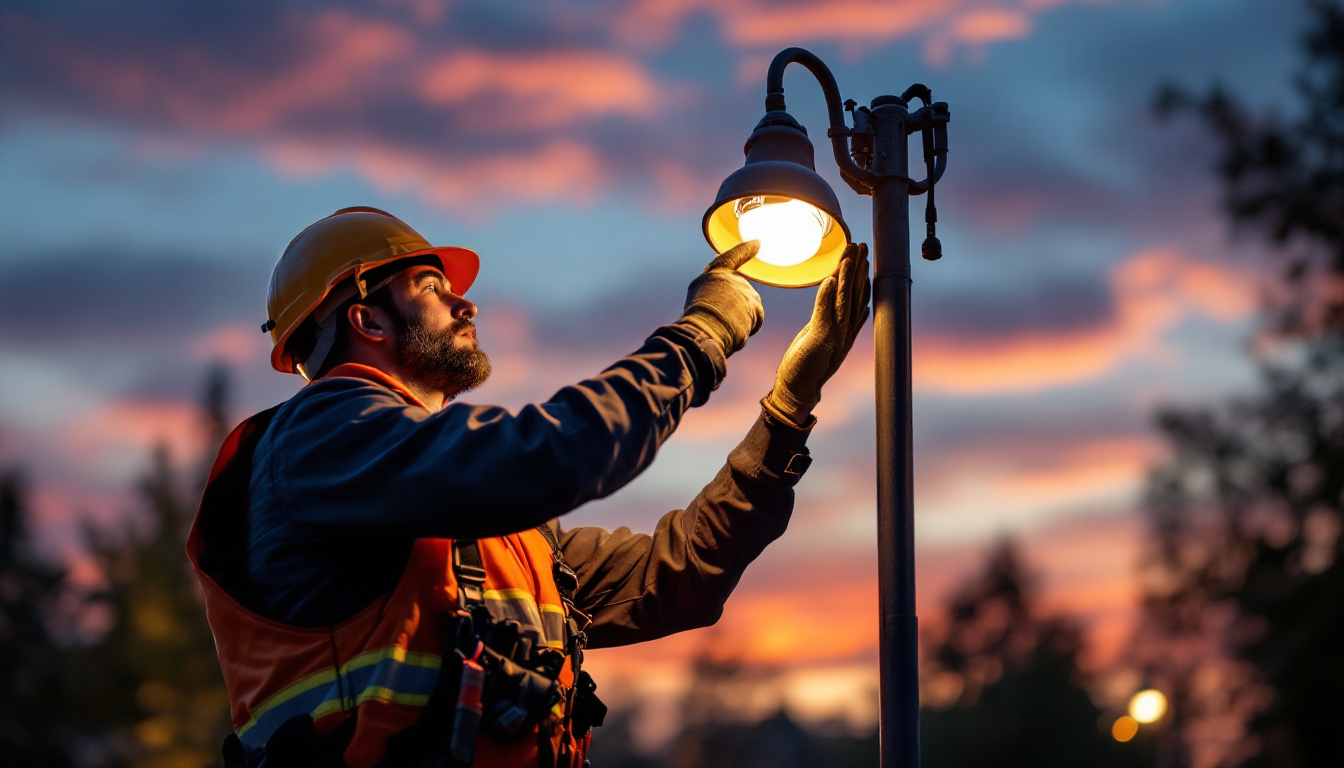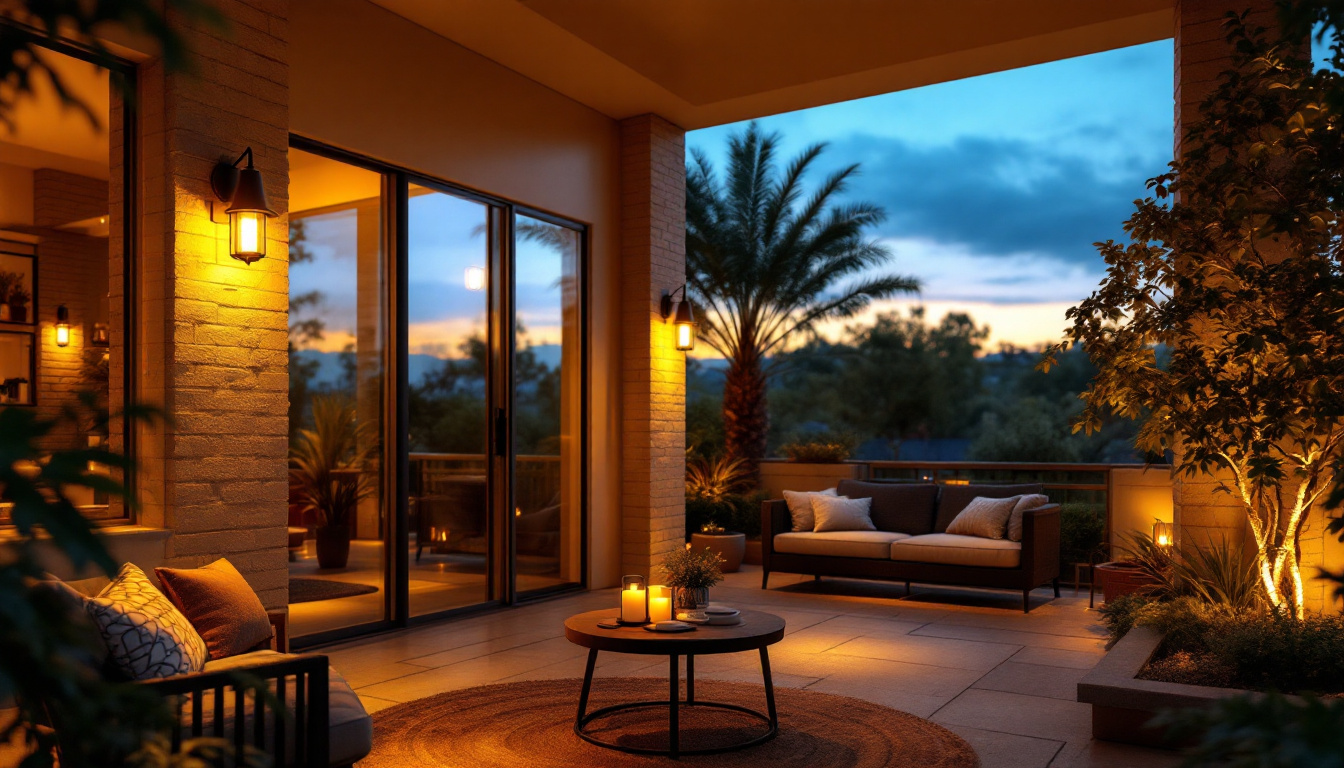
High pressure sodium (HPS) lights have long been a staple in the lighting industry, particularly for outdoor applications such as street lighting, parking lots, and industrial facilities. Their unique characteristics make them an ideal choice for many contractors. This article aims to explore best practices for lighting contractors when working with HPS lights, ensuring optimal performance and longevity.
Before diving into best practices, it is essential to understand what high pressure sodium lights are and how they function. HPS lights are gas-discharge lamps that produce light by passing an electric current through sodium vapor. This process generates a bright, golden-yellow light that is highly efficient in terms of lumens per watt. The specific chemical reactions that occur within the bulb create a spectrum of light that is particularly effective for certain applications, especially in outdoor settings where visibility is paramount.
One of the primary advantages of HPS lights is their energy efficiency. They provide a significant amount of light while consuming less energy compared to traditional incandescent or halogen bulbs. This efficiency translates into lower electricity costs for end-users, making HPS lights an attractive option for large-scale installations. Moreover, the high lumen output per watt means that fewer fixtures are required to achieve the same level of illumination, further enhancing their cost-effectiveness.
Additionally, HPS lights have a long lifespan, often exceeding 24,000 hours. This longevity reduces maintenance costs and the frequency of bulb replacements, which is particularly beneficial for contractors managing extensive lighting systems. The durability of HPS lights also means they can withstand harsh environmental conditions, making them ideal for outdoor use in various climates. Their robust design ensures that they remain functional even in extreme temperatures, providing reliable lighting solutions year-round.
HPS lights are widely used in various applications, including street lighting, parking lots, and security lighting. Their ability to illuminate large areas effectively makes them suitable for industrial sites and commercial properties. Furthermore, the warm color temperature of HPS lights enhances visibility, making them a popular choice for outdoor environments. This characteristic is particularly advantageous in areas where safety is a concern, as the golden hue can reduce glare and improve the perception of depth and distance for drivers and pedestrians alike.
In addition to their common applications, HPS lights are also utilized in agricultural settings, particularly in greenhouse operations. The specific light spectrum emitted by HPS fixtures can promote plant growth and flowering, making them a favored choice among horticulturists. Their efficiency not only supports plant health but also helps in maintaining energy costs for growers, allowing for more sustainable farming practices. As urban areas continue to expand, the versatility and efficiency of HPS lighting will likely play a crucial role in meeting the growing demand for effective outdoor lighting solutions.
Proper installation is crucial for maximizing the performance of high pressure sodium lights. Lighting contractors should adhere to several best practices during the installation process to ensure optimal results.
Before installation, conducting a thorough site assessment is essential. This involves evaluating the area where the lights will be installed, considering factors such as the height of poles, spacing between fixtures, and surrounding obstacles. A well-planned layout can significantly enhance the efficiency and effectiveness of the lighting system.
During the assessment, it is also vital to consider the local regulations and guidelines regarding outdoor lighting. Compliance with these standards not only ensures safety but also helps avoid potential legal issues down the line. Furthermore, understanding the environmental impact of the installation is increasingly important. Factors such as light pollution and energy consumption should be assessed to align with sustainability goals and community standards.
Once the site assessment is complete, the next step is to determine the optimal placement of fixtures. The spacing between HPS lights depends on several factors, including the wattage of the bulbs and the desired illumination level. A general rule of thumb is to space fixtures approximately 1.5 to 2 times the mounting height apart. This spacing ensures even light distribution and minimizes dark spots.
Additionally, contractors should consider the angle at which the lights are mounted. Proper angling can help reduce glare and improve visibility, particularly in areas with high pedestrian traffic. It is also beneficial to take into account the surrounding landscape and architecture, as these elements can influence how light is reflected or absorbed. By strategically placing fixtures to complement the environment, contractors can create a more aesthetically pleasing and functional lighting design that enhances safety and visibility.
Electrical considerations are paramount when working with high pressure sodium lights. Ensuring that the electrical system is compatible with the lighting fixtures can prevent issues and enhance performance. Proper planning and execution in the electrical setup can lead to improved energy efficiency and longevity of the lighting system, making it a critical aspect of any installation.
Using the correct gauge of wiring is crucial for HPS installations. The wiring must be able to handle the electrical load of the fixtures without overheating. Contractors should refer to the manufacturer’s specifications for guidance on the appropriate wire size based on the wattage of the bulbs being used. Additionally, it is advisable to consider the length of the wire run, as longer distances may require a larger gauge to minimize voltage drop, which can affect the performance of the lights.
Moreover, it is essential to ensure that the circuit breakers are rated appropriately for the load. Overloading circuits can lead to failures and safety hazards, making it imperative to follow best practices in electrical design. Regular maintenance checks on the wiring and circuit connections can also prevent potential issues, ensuring that the system operates safely and efficiently over time. Furthermore, implementing surge protection devices can safeguard the electrical components from voltage spikes, enhancing the overall durability of the installation.
High pressure sodium lights require ballasts to regulate the electrical current flowing to the lamp. Selecting the right ballast is critical for the performance of the lighting system. Contractors should choose electronic ballasts whenever possible, as they are more efficient and provide better performance than magnetic ballasts. Electronic ballasts can also reduce flickering and improve the color rendering of the light, which can be particularly beneficial in applications where visual clarity is important.
In some cases, transformers may also be necessary, especially in low-voltage applications. Ensuring that transformers are correctly rated for the load will enhance the reliability of the lighting system. It is also important to consider the placement of transformers, as they can generate heat and may require adequate ventilation to prevent overheating. Additionally, using dimmable transformers can offer flexibility in lighting control, allowing for adjustments based on the specific needs of the environment, whether it be for energy savings or creating the desired ambiance.
Regular maintenance is vital for ensuring the longevity and efficiency of high pressure sodium lights. Establishing a maintenance schedule can help identify issues before they escalate, ultimately saving time and costs.
Conducting routine inspections of the lighting system is essential. This includes checking for burnt-out bulbs, damaged fixtures, and any signs of wear and tear. Regular inspections allow contractors to address issues promptly, ensuring that the lighting system remains functional and effective.
During inspections, it is also important to clean the fixtures. Dust and debris can accumulate on the lenses, reducing light output and efficiency. A simple cleaning routine can significantly enhance the performance of HPS lights.
Despite proper installation and maintenance, issues may still arise with high pressure sodium lights. Common problems include flickering lights, inconsistent brightness, and premature bulb failure. Identifying the root cause of these issues is essential for effective troubleshooting.
Flickering lights may indicate a problem with the ballast or electrical connections. Inconsistent brightness can result from poor wiring or a failing bulb. Contractors should systematically check each component of the lighting system to pinpoint the issue and implement the necessary repairs.
As the focus on energy efficiency and sustainability continues to grow, lighting contractors must consider the environmental impact of their installations. High pressure sodium lights, while efficient, can still be improved upon with modern technologies.
While HPS lights have their advantages, LED technology has emerged as a more energy-efficient alternative. LED lights consume significantly less energy and have a longer lifespan, making them a compelling choice for many applications. Contractors should stay informed about advancements in LED technology and consider offering upgrades to clients when appropriate.
Transitioning to LED lighting can also enhance the quality of light, providing better color rendering and visibility. This improvement can be particularly beneficial in settings where safety and aesthetics are paramount.
Incorporating smart lighting solutions can further enhance the efficiency of lighting systems. Smart controls allow for automated dimming, scheduling, and remote monitoring, enabling contractors to optimize energy usage based on real-time conditions.
These technologies not only improve energy efficiency but also provide users with greater control over their lighting systems. As the demand for smart solutions continues to grow, contractors should consider integrating these technologies into their offerings.
High pressure sodium lights remain a valuable option for many lighting applications, provided that contractors follow best practices in installation, maintenance, and energy efficiency. By understanding the unique characteristics of HPS lights and implementing effective strategies, lighting contractors can ensure optimal performance and longevity of their installations.
As the industry evolves, staying informed about advancements in lighting technology and sustainability will be crucial for contractors looking to remain competitive. Embracing new solutions and continuously improving practices will ultimately benefit both contractors and their clients.
Ready to elevate your lighting installations with the best in high pressure sodium lights and more? Look no further than LumenWholesale, where we provide contractors with superior, spec-grade lighting solutions at unbeatable wholesale prices. With our commitment to quality and affordability, you’ll find everything you need to meet the highest industry standards and ensure the success of every project. Plus, with the convenience of free shipping on bulk orders, you can enjoy premium lighting without hidden fees or compromises. Don’t miss out on the perfect blend of quality, affordability, and convenience. Discover the value of wholesale lighting and make LumenWholesale your go-to source today by visiting Wholesale Lighting at the Best Value.

Discover why commercial LED outdoor lighting is a game-changer for lighting contractors.

Discover essential insights and practical tips for lighting contractors looking to enhance their projects with solar driveway lighting.

Discover how outdoor lighting solutions are revolutionizing the work of lighting contractors.

Discover everything lighting contractors need to know about can LED lights in this comprehensive guide.